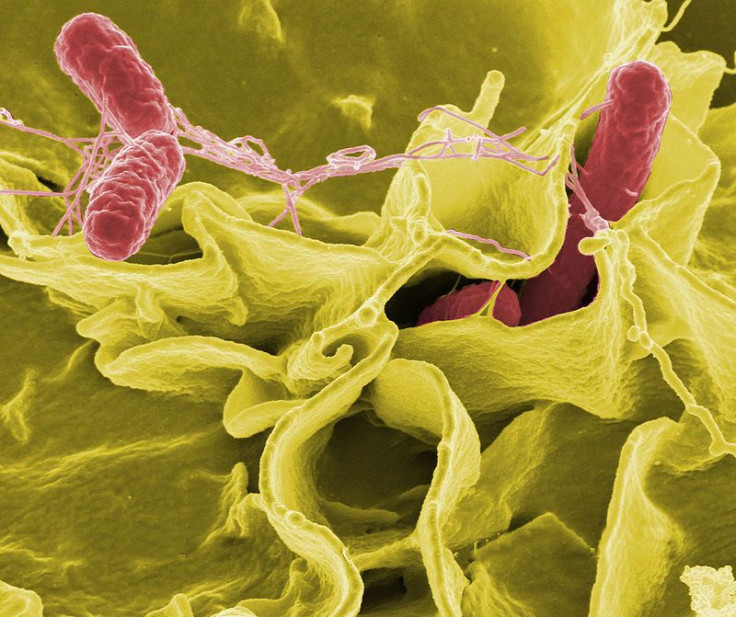Genetically Engineered Salmonella To Be Used As Potential Cancer Treatment

Salmonella is a group of bacteria that causes Salmonellosis, an infection that typically results after eating food gone bad, or raw, uncooked foods. The symptoms of the infection are diarrhea, fever, and abdominal pain. Your initial instinct, then, is to stay as far away from Salmonella as possible.
But new research provides a turning point for the history of Salmonella: Genetically modified versions of the bacteria might actually be used to kill cancer cells, according to a study published in mBIO.
“There has long been interest in using genetically engineered microbes to target and destroy cells within solid tumors,” Roy Curtiss, an author of the study and professor of microbiology at Arizona State University, said in the press release. “I think this study goes a significant way in developing some strategies that will help in the overall means of using Salmonella as part of a cancer therapy.”
Past studies have shown that particular strains of Salmonella, such as Salmonella enterica, killed cancer cells and attacked solid tumors. But researchers are still trying to figure out how to harness Salmonella’s anti-cancer properties, without causing infection in humans. While Salmonella infections often heal on their own, in extreme cases they can lead to sepsis or death; avoiding this is important for the research to move forward.
The researchers of the new study tried to do this through genetic engineering of the bacteria strains. They altered the lipopolysaccharide structure (LPS), which induces sepsis, in order to make the bacteria less harmful. After deleting the LPS genes, the researchers then experimented with the modified Salmonella, and found that it was effective at killing human cancer cells and shrinking tumors in mice. But this particular strain wasn’t as effective at colonizing the tumors as much.
Thus, the researchers genetically-modified the strain once more, hoping to induce the “arabinose promoter.” After all of these alterations, the strain was then able to enter a mouse with tumors without hurting the mouse’s healthy cells, was able to colonize tumors, and would enter cancer cells and turn toxic. In a normal cell, Salmonella typically takes a very long time to divide — but in cancer cells, it divides every hour.
“This transition from a benign, invasive Salmonella that doesn’t hurt normal cells to the toxic type occurs very rapidly (time wise) in the tumor due to the very rapid growth and cell division that occurs when Salmonella enters a tumor,” Curtiss said in the press release.
Doctors have been aware of tumor-shrinking properties of bacteria for centuries, but finding the right balance between safe and toxic has always been a major concern. Another issue, as described by a 2007 study, is that while the bacteria enter the tumor cells, they may often fail to spread and “finish the eradication process.”
More research is needed to determine the level of efficacy, but the researchers hope that the investigational research will lead to its use in cancer treatments — in collaboration with chemotherapy and radiation therapy.
Source: Curtiss III R, Frahm M, Felgner S, et al. Efficiency of Conditionally Attenuated Salmonella enterica Serovar Typhimurium in Bacterium-Mediated Tumor Therapy. mBio. 2015.



























